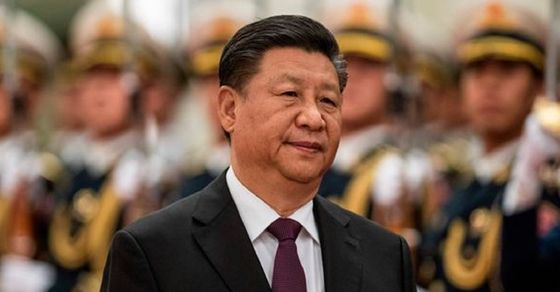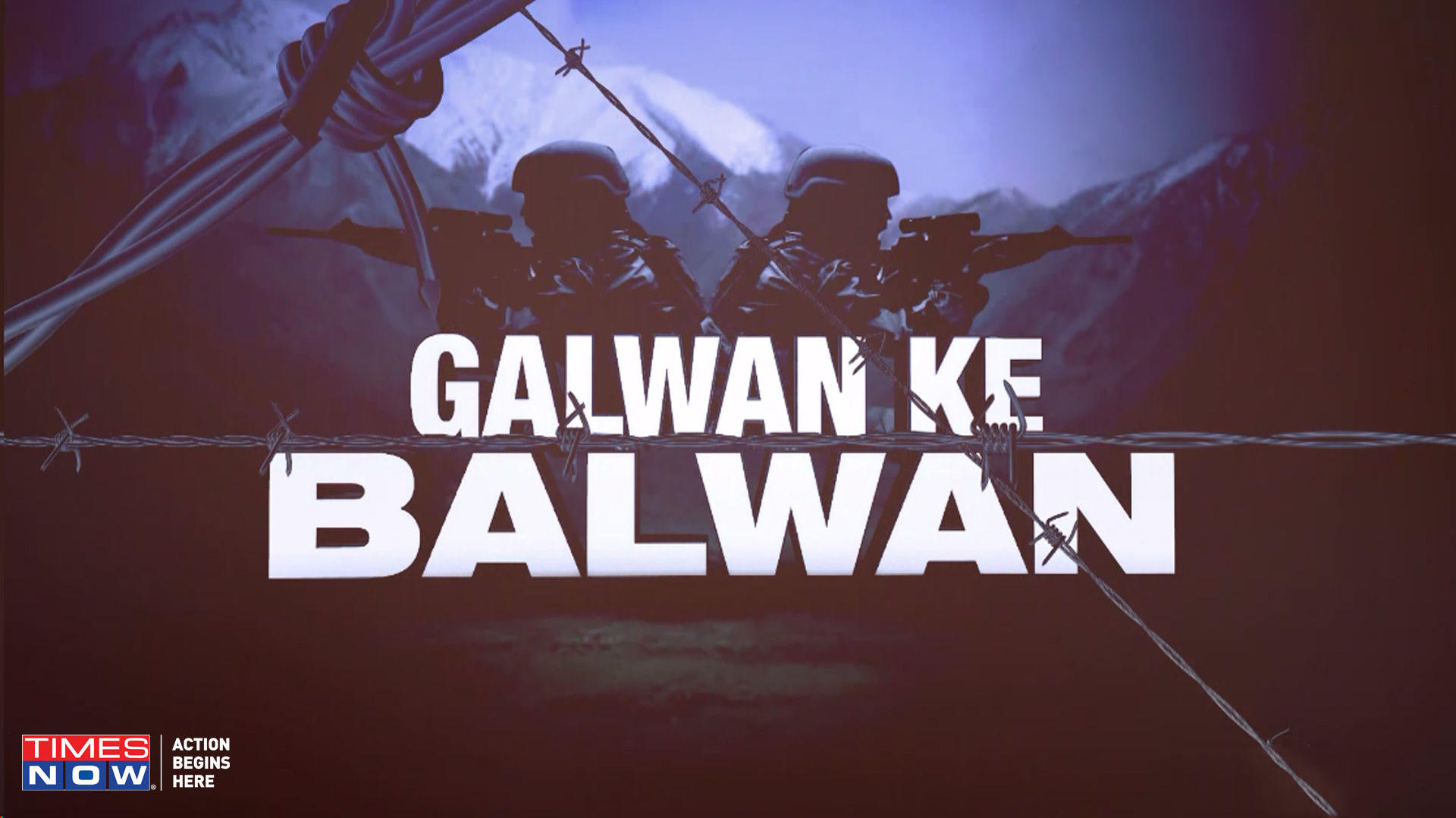Raisina Manual to deal with China’s rogue party-state
 Abhinav Pandya
Abhinav Pandya
Published : June 27, 2020, 7:45 pm | Updated : June 27, 2020, 7:45 PM
Army Chief General M.M. Naravane commended troops for their high morale, as he visited forward areas in Eastern Ladakh and reviewed the operational situation on the ground on Wednesday. ANI
China’s recent incursions in Pangong Tso and Galwan valley have proved the futility of engaging or appeasing China, making it amply clear that as long as CCP continues to exist, China will be revanchist, expansionist and India’s adversary number one. That said, it would be irrational for India to trust China in the future. Keeping borders vague helps China in bogging down India as a continental power. Further, China needs roads in the border regions of the western sector to link them with BRI, Xi’s flagship foreign policy initiative. India’s infrastructure development in the border regions acts as a significant hindrance.
Under Mao’s reincarnate Xi Jinping, CCP has long-term imperial ambitions of world domination. Hence, in the future, China’s expansionist encroachments are highly likely to escalate in number, frequency, and magnitude, unless India abandons Dalai Lama, accepts a completely subordinate status, and acts accordingly, willingly surrenders Arunachal, Ladakh, and whatever new claims of sovereignty that will float from Beijing, as per their strategic interests. After all, a sub-continental power in its backyard must accept its subordinate status and do as what they say—yes, that is what the CCP thinks. However, China wants all that without a full-blown war, which it fears. There lies the weakness, intended to be compensated by creating smokescreens of aggression and threats of war. Also, because, in China’s understanding of India, the latter’s political leadership is likely to display nervousness in the face of an aggressive force posture, maybe because of some fundamental problem with India’s strategic sub-conscious, China creates smokescreens of an impending war. Delhi must understand it is psychological and pay back in the same coin, i.e., by shaping China’s perceptions—making China believe that India is no more a “good boy” and willing to confront in a full-fledged war with international support. An assertive force posture, if not aggressive, if it’s too much to swallow for Delhi, on the diplomatic, military and economic front, avoiding escalation, is the road that India will have to tread on.
After the current crises, India-China relations are likely to be deteriorating further. China-Pakistan axis is likely to intensify its mission and operations against India’s strategic interests in Kashmir and international diplomatic affairs, as the bonding between the two is much deeper, robust, and complex than what India’s strategic community believes. That said, even while having a trade, economic, and technology-based exchanges with China, India needs to consider the Pakistan factor and underlying adversarial intent of the two. A strong force posture against Pakistan is undoubtedly going to challenge and unnerve China. This also includes keeping things “vibrant” in CPEC areas such as Gilgit-Baltistan and Balochistan, diplomatically, morally, and maybe in other useful ways. India has an advantage here. Pakistan is least likely to retaliate with a full-blown war if India initiates firm action against a Pak-sponsored terrorist attack. China is expected to protest, but not very likely to come in the forefront as it will involve other powers.
Hence, it is a great situation that can be used for signalling to China, put psychological pressure on China of being challenged and undermined, and manufacturing occasions for the western powers to be vocal against China in global forums and also act, in the event of China threatening escalation.
Secondly, India must give a befitting military reply to the current audacity of China. Importantly, it will also be a reply to Pakistan and is likely to put brakes in China’s global ambitions. Otherwise, the morale of the armed forces and Indians, in general, will take a plunge into a deep morass of depression. India has been through that post-1962, and indeed, would not like to go through the same experience again. India of 2020 is different from that of 1962, and the present government has shown steadfast determination and political will in the past on various matters of national interest. It must show that resolve, once again. In the current situation, there arises a possibility of a localized sectoral war on the Eastern Front. However, Delhi has to ensure that Nehru’s blunders are not repeated, and the action follows a well-planned strategic and tactical thought-process.
Thirdly, at the policy level, it must be clear that China is India’s number one adversary, and India needs a well-thought-out multi-pronged strategy to counter China. The immediate and the most critical future-target of the government should be to bridge the power asymmetry with China. Further, given that China-led world order is detrimental to India’s interests, Delhi must ensure that it does not strengthen the institutions furthering the strategic interests of China. India’s appeasement of China by participating in SCO, AIIB serves no purpose except strengthening China as a global power. Hence, India seriously needs to rethink the utility of participating in such bodies to its strategic interests. Even WTO, after Chinese dominance, makes no sense for India. Indian diplomats should also stop chasing the mirage of UNSC’s permanent membership. New Delhi’s desire to seek recognition and a birth in the power-club severely dented its confidence. The unrealistic dream led India always to follow “good behaviour” and stay away from forming military alliances, making an assertive force posture and aggressively pursuing infrastructure development in the border regions, in the hope of getting China’s support. The MEA must get it clear that it is a nation’s GDP and military-power that gets permanent seats in UNSC with respect. Begging bowls fetch nothing.
India’s debunking of the “One China” policy has been a long overdue, and now it is time that India formally declares its disagreement with the “One China” policy. Despite decades of India’s silence over China’s imperial ambitions in Tibet, Taiwan, and Hong Kong, India could not make China support India even on one issue of Kashmir. Delhi must shed its inhibitions in closer engagement with the Tibetan government-in-exile, based in India. For India, Taiwan should be China, for all practical, social, and cultural purposes. Even if India does not give formal recognition, India can start closer ties with Taiwan. Indian students should go to Taiwan instead of China. Strengthening of cooperation in defence supplies and intelligence sharing is a great option to explore. More people-to-people contacts should translate into more investments from Taiwan, academic exchanges, and Taiwan activists and leaders getting space and voice in Indian think-tanks, electronic media, and newspapers.
Further, India needs to recognise and extend moral and diplomatic and support to Hong Kong and take a firm stand against Chinese atrocities and human rights violations in Xinjiang. Economically, there is a strong need to develop internal capabilities in manufacturing and infrastructure and make the economic environment congenial for foreign investors. The strategic rivalry with China will be a long-lasting one and to counter an adversary like that India needs superior entrepreneurs, confident diplomats, advanced experts on China, and considerable investments in education and skills to turn its vast population into a productive labour force.
India’s “
defensive wedge strategy”, so far practised by alternatively approaching China and Pakistan for peace with the idea of driving a wedge between the two revisionist powers of Asia, has failed. Hence, India must be ready for a twin-front war. On the diplomatic front, intense effort is needed in “external balancing” by vitalising the Indo-Pacific charter, outlined by India’s prominent strategic expert
Madhav Nalapat in many of his recent writings. The Quad has to come together to save the rules-based world order from the revanchist ambitions of the Middle-Kingdom. Muscle-flexing in the South China Sea with Americans and the other members of the Quad is highly likely to inject sanity in the minds of CCP’s anachronistic leadership. Further, the Quad must counter Chinese presence in the Indian Ocean Region and firm up its naval footprint.
Delhi must realise that China will respect and fear a powerful India. Even the vast military potential comes to naught if a country does not have confidence in its capability, clear consciousness of its power, and decisive leadership with vision and the skills to use national power.
India needs to transform its strategic thinking and make tough decisions. However, given the rot of opportunism and poor strategic vision that ails Indian bureaucracy, academia, and politics, it looks an extremely challenging task.
Abhinav Pandya is the author of “Radicalization in India: An Exploration” (Pentagon Press, 2019). Currently, he is writing his second book, “Terror Financing in Jammu and Kashmir”. He did his BA from St. Stephen’s College, Delhi and post graduation in Public Affairs from Cornell University, US. He has more than seven years of experience in public policy, counter-terrorism, electoral politics and the development sector in India and the US.





